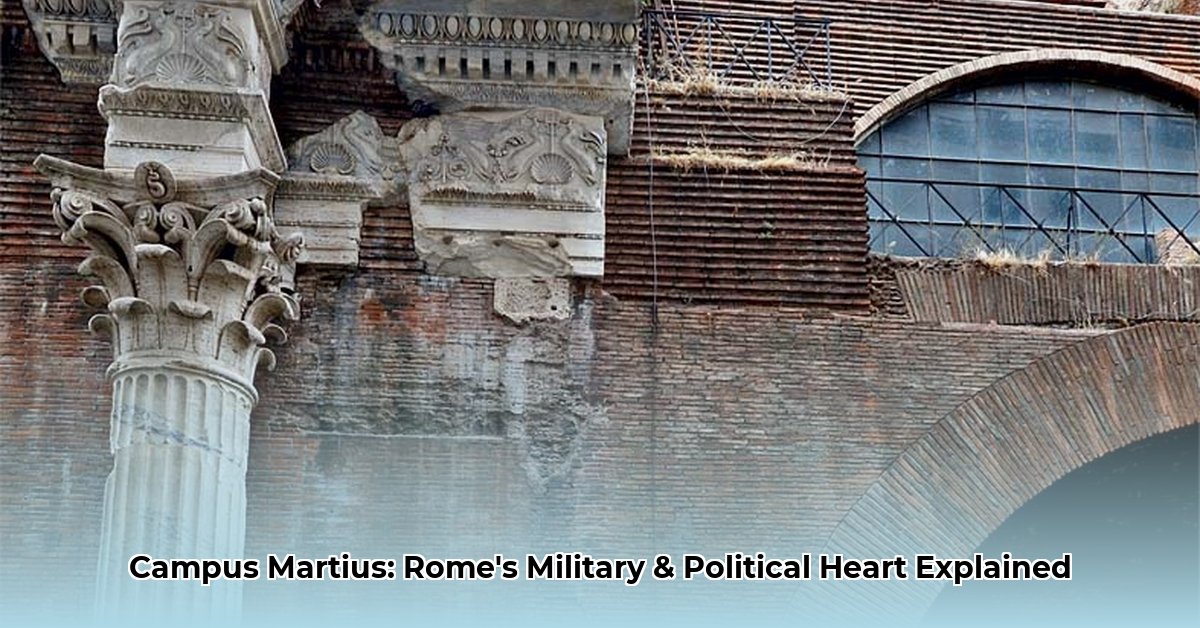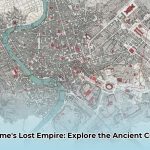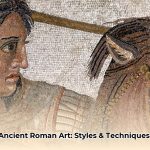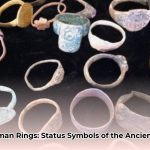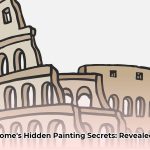Ever wondered where the Roman army toughened up and the very foundations of Roman political power were forged? That’s the Campus Martius for you. Originally a vast, open training field, it blossomed into an indispensable urban core, hosting everything from crucial elections and religious festivals to elaborate chariot races. This article delves into the fascinating story of how this expansive plain transformed dramatically over centuries, how emperors like Augustus left an indelible mark, and the pivotal role religion played in shaping this iconic space. We’ll explore its continuous evolution, reflecting Rome’s military might, political ambitions, and enduring architectural ingenuity across millennia.
The Campus Martius: From Sacred Field to Urban Nexus
The Campus Martius, or ‘Field of Mars,’ began as an extensive, often marshy, plain adjacent to the Tiber River in ancient Rome. Spanning approximately 250 hectares (600 acres), it stretched from the Capitoline Hill north to the Porta Flaminia, and westward from the Quirinal Hill to the river’s bend. Its natural topography, low-lying and susceptible to frequent inundations from the Tiber, included several swamps, streams like the Petronia Amnis, and even small wooded areas like the Aesculetum. Crucially, it lay outside the pomerium, the city’s sacred boundary, meaning armed troops and burials were permitted—an ideal location for military drills and expedient for receiving foreign dignitaries barred from entering the city proper.
This location is clearly shown on an ancient Rome map. According to Rome’s foundation myth, this land “between the city and the Tiber” was once the property of Rome’s last Etruscan king, Tarquinius Superbus. After his defeat and exile, the plain was dedicated to Mars, the Roman god of war and agriculture. From its earliest days, Roman men assembled here every spring before heading off to fight hostile tribes, and citizens gathered for important religious festivals. With the exception of a small altar to Mars, the Ara Martis, its original location debated but mentioned in early Roman law, no significant visible changes were made to the field until the fifth century BCE.
As Rome’s influence and wealth expanded, particularly following the Punic Wars (mid-3rd century BCE), the necessity for constant military mustering on the Campus Martius diminished. This shift allowed for its gradual transformation. Victorious generals, often fulfilling vows made to deities during campaigns, began commissioning temples to honor various gods, commemorating their achievements and imbuing the area with new religious significance, showcasing the spoils of war to the Roman populace. This marked the initial phase of the Campus Martius’s evolution from a mere military field to a more multifaceted precinct.
Republican Transformations and Civic Structures
The late Roman Republic witnessed even more profound changes. Affluent and influential Romans, including powerful figures like Lucius Cornelius Sulla, began acquiring and developing plots of land. Private residences (villas) and multi-story apartment buildings (insulae) progressively encroached upon the once-open common lands, turning parts of the Campus Martius into a bustling suburban area.
Around 55 BCE, the famed statesman Gnaeus Pompeius Magnus (Pompey the Great) erected Rome’s first permanent stone theater, the Theatrum Pompeium. This monumental complex, which included a colossal portico and gardens, firmly established the area as a major entertainment hub and even served as a meeting place for the Senate after the Curia Hostilia burned down. This initiative reflected a new paradigm in Roman urban planning, one where victorious generals sought to outdo each other in public benefaction and self-aggrandizement.
Furthermore, the Campus Martius solidified its role as a pivotal center for political activities. It regularly hosted citizen assemblies (comitia centuriata), where Romans gathered, often armed, to vote on laws and elect magistrates. Julius Caesar initiated plans for the Saepta Julia, a vast marble-clad voting enclosure designed to manage immense crowds and prevent electoral fraud. His heir, Augustus (Octavian), later completed this structure, further underscoring the area’s political centrality. This period, while showcasing Rome’s architectural prowess and rising ambitions, also coincided with the profound political shifts that eventually led to the unraveling of the Roman Republic and the rise of imperial rule.
Beyond entertainment and politics, the Campus Martius hosted vital civic functions. As early as 435 BCE, the Villa Publica was established as a prepared clearing, serving as a gathering space for citizens to congregate every five years to be counted in the census. As Rome expanded, so did the need for more sophisticated urban infrastructure, shifting the Campus Martius away from solely military endeavors toward a comprehensive civic landscape. The construction of the Circus Flaminius in 221 BCE, dedicated to horse racing and plebeian games, further diversified the activities hosted in the southern part of the Campus.
The Augustan Age: A Monumental Renovation
The most transformative period for the Campus Martius undoubtedly occurred during the reign of Emperor Augustus (27 BCE – 14 CE). Upon consolidating his power, Augustus officially integrated the area into Rome’s urban fabric as part of the city’s 14 regions (specifically Regions VII and IX). This strategic move catalyzed an unprecedented construction boom, meticulously planned to solidify the image of imperial power, prosperity, and the new era of Roman peace, the Pax Romana.
A pivotal figure in this era was Marcus Vipsanius Agrippa, Augustus’s close friend, son-in-law, and trusted advisor. Agrippa spearheaded ambitious projects, converting the often marshy tracts into verdant parklands, public baths (the renowned Baths of Agrippa, the first large-scale public thermae), and numerous temples. He also oversaw the completion of the Aqua Virgo aqueduct by 19 BCE, providing fresh water to these new amenities—baths, fountains, and pools—thereby significantly enhancing urban hygiene and public welfare. Agrippa also built the original Pantheon (completed within a year of the Saepta Julia) and the Porticus Argonautarum, later rebuilt by Hadrian.
Augustus himself commissioned several iconic structures, including the Ara Pacis Augustae (Altar of Augustan Peace), begun in 13 BCE and dedicated in 9 BCE. This monument profoundly symbolized the stability and peace his rule brought, with its intricate carvings depicting Augustus’s family, the Senate, and the goddess Tellus, conveying messages of dynastic continuity and abundance. Nearby, Augustus located his monumental Horologium Augusti, a giant sundial using an Egyptian obelisk as its gnomon, designed to cast a shadow that aligned with the Ara Pacis on his birthday, though its precise accuracy and function have been debated by modern scholars. The erection of the colossal Mausoleum of Augustus around 28 BCE further redefined the Campus Martius, transforming it from a military exercise ground into a potent symbol of imperial might and dynastic legacy, serving as the imperial family’s burial place. Other significant structures from this period included the magnificent Theatre of Marcellus, dedicated to Augustus’s beloved nephew.
These were not merely architectural feats; they were strategic statements, showcasing innovative building techniques, celebrating the Augustan ideology of peace and renewed Roman glory, and, importantly, strategically connecting Augustus with Rome’s political and civic life. The ancient Roman historian Strabo eloquently described the remarkable appearance of the Campus Martius even during Augustus’s lifetime, marveling at its monumental beauty. By sponsoring and associating himself with nearly all major public buildings related to political activities—meetings of the Senate, legislative and electoral assemblies—Augustus permanently connected himself with Rome’s political atmosphere, subtly asserting his authority while seemingly restoring republican traditions.
Imperial Additions, Decline, and Enduring Legacy
Subsequent emperors continued to shape the Campus Martius. Following the Great Fire of 64 CE during Nero’s reign, Emperor Domitian initiated extensive repairs, adding his own contributions such as a stadium (today’s Piazza Navona) and an Odeion (a smaller, covered performance hall). Hadrian (117-138 CE) rebuilt some of the Augustan structures, most notably the Pantheon, which he transformed into the extraordinary domed temple we see today, a testament to Roman engineering brilliance. Hadrian and the Antonine emperors further emphasized imperial divinity, commissioning temples dedicated to deified figures like Hadrian himself and his mother-in-law, Divine Matidia.
The architectural landscape continued to evolve. The rectangular temples of Largo di Torre Argentina, for instance, attest to the broadening spectrum of religious practices beyond the traditional Capitoline Hill and Roman Forum, incorporating diverse cults. Art historian Stamper suggests this area also marked the beginning of many triumphal processions. The 1st century BCE saw a shift from the Ionic to the more ornate Corinthian order in temple architecture. Later, during the latter half of the 1st century CE, Roman architecture experienced a “fundamental change in stylistic direction,” with architects increasingly embracing concrete as a design material, breaking free from traditional classical forms, as exemplified by Nero’s innovative building projects.
By the mid-4th century CE, significant demographic and religious shifts were underway. Many pagan temples were systematically closed, and new Christian edifices began to emerge, sometimes repurposing existing structures or using their materials. The Pantheon, for example, was notably converted into the Church of Santa Maria ad Martyres in 609 CE. Emperor Aurelian’s ambitious project around 270 CE saw the Campus Martius fully integrated within the city’s new defensive perimeter—the formidable, 19-kilometer-long Aurelian Walls. This defensive consolidation underscored a shift from outward expansion to inward preservation, responding to mounting barbarian threats that had reached northern Italy.
As the Roman Empire gradually declined, the Campus Martius faced various challenges, including devastating fires, recurrent floods from the Tiber, and destructive invasions (e.g., the Visigoths in 410 CE and the Vandals in 455 CE). Despite the destruction and repurposing of many ancient structures—with marble facings often burned for lime or columns repurposed—the area never truly disappeared. Its crucial proximity to the Tiber River, providing essential water access after aqueducts were cut, meant it remained a vital, densely populated part of the city throughout the Middle Ages. Medieval writers like Magister Gregorius marveled at the Roman structures, even as they noted the rise of a “forest of [medieval] towers” over ancient ruins.
The Renaissance and later periods brought further significant modifications, including the restoration of ancient Roman aqueducts and new urban planning initiatives by various Popes. The Via Cassia, connecting Rome to northern Europe, entered the city through the Campus Martius, making it a critical hub. The area became increasingly crowded, leading to the construction of protective embankments in the late 19th century to stop the flooding of the Tiber, fundamentally altering its relationship with the river. Today, the Campus Martius remains a vibrant, bustling district of modern Rome, its layers of history evident in the surviving ancient structures, repurposed monuments, and the intricate urban fabric. It stands as a profound testament to Rome’s enduring capacity for transformation, reflecting military strength, political ambition, religious devotion, and architectural innovation across millennia.
| Period | Key Developments |
|---|---|
| Early Republic | Primarily a military training ground and pasture, located outside the pomerium. Saw early altars (e.g., Ara Martis) and the establishment of the Villa Publica for census activities (435 BCE). |
| Late Republic | Gradual urbanization with private villas and insulae. Emergence of major entertainment venues (Pompey’s Theatre, 55 BCE) and political centers (comitia centuriata, initial plans for Saepta Julia by Caesar). Construction of numerous temples from war spoils (e.g., Bellona, Fortuna, Hercules). |
| Augustan Period | Officially incorporated into Rome’s urban fabric (Regions VII & IX). Extensive state-sponsored building projects: Ara Pacis, Mausoleum of Augustus, Baths of Agrippa, Aqua Virgo aqueduct, original Pantheon, Theatre of Marcellus, completion of Saepta Julia, Horologium Augusti. Area transformed into a symbol of imperial power and peace. |
| Later Empire | Continued construction/restoration (Domitian’s stadium/Odeion; Hadrian’s Pantheon rebuild; Antonine temples). Religious shifts: decline of pagan temples, rise of Christian buildings (e.g., Pantheon’s conversion). Full integration into the city’s defensive perimeter with the construction of the Aurelian Walls (c. 270 CE). |
| Late Antiquity & Medieval Era | Decline and repurposing of ancient structures due to invasions, fires, and floods. Population concentrated in Campus Martius due to reliance on Tiber water after aqueduct damage. Becomes the most populous area of Rome, with new medieval structures built directly over ancient ruins. |
| Renaissance & Modern Era | Restoration efforts (aqueducts). New urban planning initiatives connecting the area to Europe (Via Leonina/Ripetta). Increased population density. Construction of Tiber embankments in the late 19th century fundamentally alters the riverfront and reveals more ancient sites. Remains a vibrant historic district. |
Core Insights on the Campus Martius:
- The Campus Martius experienced a fundamental shift from an external, liminal military training ground to an integral, densely populated, and monumentally-adorned urban center within Rome’s expanding boundaries.
- Augustus’s reign orchestrated the most significant architectural and functional transformation, deliberately reshaping the area to symbolize imperial power, peace, and consolidated civic identity, effectively making it the stage for his new political order.
- Its evolution consistently mirrors the changing priorities of Roman society—from early republican military might and citizen politics, through the assertion of imperial authority and significant religious shifts, and finally, its remarkable resilience as Rome’s enduring urban core through medieval and modern times.
Actionable Insights for Engaging with Roman History
The multifaceted story of the Campus Martius offers profound lessons for historians, educators, tourism professionals, and urban planners. Its layered history provides a unique and dynamic lens through which to understand the complexities and continuous transformations of Roman civilization, from its mythical origins to its modern identity.
| Stakeholders | Short-Term (0-1 Year Focus) | Long-Term (3-5 Year Focus) |
|---|---|---|
| Historians/Researchers | Prioritize targeted archaeological investigations in less-explored sections of the Campus Martius or beneath modern buildings, focusing on potential sites for early religious structures, the Ara Martis, or the precise course of the Petronia Amnis to refine topographical understanding. Conduct detailed studies of material reuse during Late Antiquity and the Middle Ages. | Develop sophisticated, open-source digital reconstructions and virtual reality (VR) experiences that allow for interactive, scientifically accurate exploration of the Campus Martius across various historical periods, illustrating its successive layers of transformation. Integrate GIS data to map changing land use patterns and flood impacts over time. |
| Tourism Agencies | Enhance existing tourist itineraries by explicitly highlighting the evolutionary significance of the Campus Martius, integrating compelling narratives about its military origins, republican political functions, imperial grandeur, and medieval resilience. Create thematic walking tours focusing on specific aspects (e.g., “Augustus’s Campus,” “Republican Power Hub”). | Implement advanced Augmented Reality (AR) and Virtual Reality (VR) applications at key sites within the Campus Martius (Pantheon, Largo Argentina, Theatre of Marcellus). These applications should overlay detailed 3D reconstructions of ancient Roman architecture and daily life onto the modern landscape, offering visitors a truly immersive and context-rich experience of the site’s past. |
| Educators | Integrate the dynamic, multi-period evolution of the Campus Martius into history, classics, and urban studies curricula. Emphasize the interplay between its physical development and the broader political, socio-economic, and cultural changes in Rome, using it as a case study for understanding urban growth and adaptation. | Foster cross-disciplinary academic programs that combine historical research with archaeological findings, architectural preservation studies, digital humanities, and urban planning. Encourage collaborative projects that result in high-quality educational resources, simulations, and public outreach initiatives to provide a holistic understanding of the Campus Martius. |
By focusing on these strategic approaches, we can not only deepen our academic understanding of this pivotal ancient Roman district but also ensure its rich, complex historical narrative continues to resonate powerfully with contemporary audiences and inform future urban development.
Citations:
- Britannica. (n.d.). Campus Martius. Retrieved from https://www.britannica.com/place/Campus-Martius
- Digital Augustan Rome. (n.d.). Campus Martius. Retrieved from https://www.digitalaugustanrome.org/records/campus-martius/
